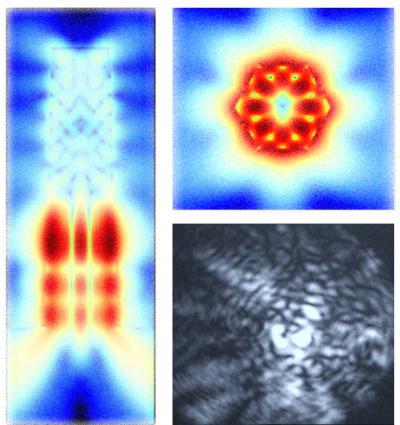Engineers grow nanolasers on silicon
Engineers at the University of California at Berkeley said that they have found a way to grow nanolasers on a silicon surface.
The invention could lead to, if we believe the scientists, to a new class of much more efficient microprocessors.
Silicon has been known to be very deficient at generating light, which caused Berkeley engineers use another class of materials known as III-V semiconductors to create light-based components such as LEDs and lasers, even if there are substantial challenges: "Growing III-V semiconductor films on silicon is like forcing two in-congruent puzzle pieces together," said Roger Chen, a UC Berkeley graduate student. "It can be done, but the material gets damaged in the process."
The research group found a solution by growing nanopillars made of indium gallium arsenide, a III-V material, onto a silicon surface at the relatively cool temperature of 400 degrees Celsius."Working at nanoscale levels has enabled us to grow high quality III-V materials at low temperatures such that silicon electronics can retain their functionality," Chen said. He claims that technique could be applied to mass-manufacturing and that it can generate near infrared laser light at room temperature.
"The hexagonal geometry dictated by the crystal structure of the nanopillars creates a new, efficient, light-trapping optical cavity," a press release stated. "Light circulates up and down the structure in a helical fashion and amplifies via this optical feedback mechanism."
There was no information whether and when this technology could go into production. the detailed results of the study are published in the February 6 issue of Nature Photonics.
Get Tom's Hardware's best news and in-depth reviews, straight to your inbox.

Douglas Perry was a freelance writer for Tom's Hardware covering semiconductors, storage technology, quantum computing, and processor power delivery. He has authored several books and is currently an editor for The Oregonian/OregonLive.
